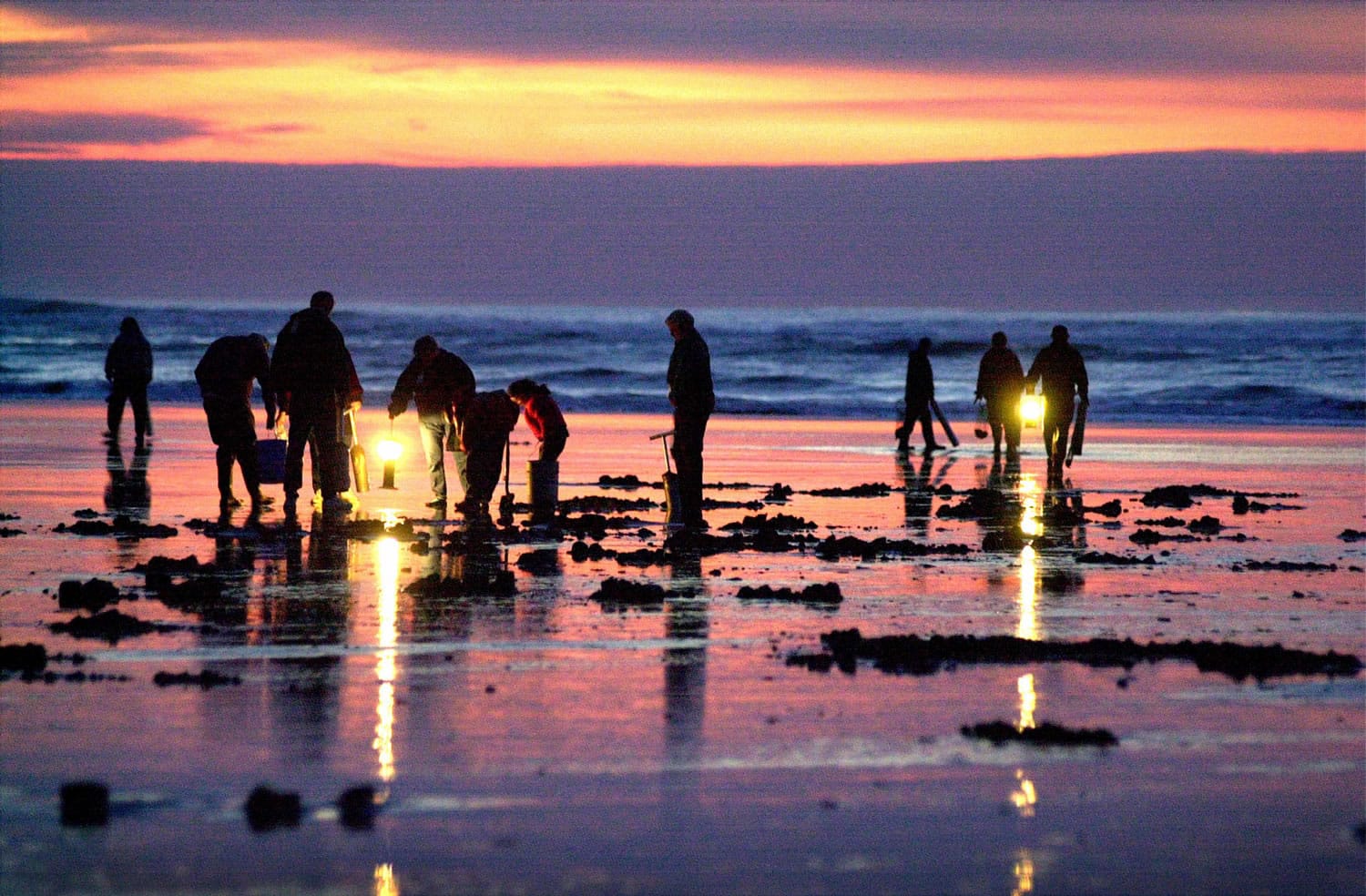Razor clam numbers on Long Beach Peninsula are down, but not dramatically, the Washington Department of Fish and Wildlife says.
The total allowable catch will be 1.09 million clams this winter and spring, down from 1.28 million in 2010-2011. The overall number of clams is 3.65 million, slightly below the five-year average of 4.24 million.
Dan Ayres, coastal shellfish biologist, said the populations are largest north of Klipsan. The average clam size is 4.1 inches.
“We’ve seen a bit of a shift, with more clams in the center of the beach,” he said.
There are a good number of small clams on Long Beach, which is good news for future years.
One question facing state officials is should there be any digging in December.
“The best low tides fall around Christmas time,” Ayres said. “We’ve never allowed much digging around Christmas because people have so many other plans.”
Here’s the outlook for the four other Washington clam beaches:
Twin Harbors
The total allowable catch will be 616,000 clams, down from a 845,000 limit and a harvest of 675,000 clams last season.
The overall number of clams is 2.05 million, slightly below the five-year average of 2.99 million.
Population densities are highest at North Cove and Grayland. The average clam size is 3.7 inches.
Outlook: Numbers are down and so is the average size. Because there was an above-normal wastage last season, shellfish biologists and law enforcement officers will be paying attention this year, Ayres said.
He also noted an unusual buildup of sand there, making the beach steeper than usual.
“The poles marking the clam reserve are 20 feet long, but only about 3 feet are sticking up out of the sand.”
Copalis
The state’s share of the total allowable catch is just 371,000, down from 743,000 last season. The harvest last season was 674,000 clams.
The total population this season is 2.48 million, down from the five-year average of 5 million.
Clam densities are spread evenly from Ocean Shores to Copalis. The average size is 4 inches.
Outlook: This area is one of the most popular with south Puget Sound diggers, but they can expect fewer opportunities. Numbers are down about 40 percent.
“We didn’t see a lot of small clams in summer of 2010 so it’s not a surprise,” Ayres said. “We’ll do some digging, but there will be far less this year. I don’t know what to make of that (decline). This is little more of an ebb than I would like to see, but I’m not setting off the fire alarm just yet.”
Mocrocks
The state’s share of the total allowable catch is 606,000, up from 546,000 last season, when the harvest was 532,000 clams. The total population is 4.03 million, compared with the five-year average of 3.81 million.
The clam densities are highest from Copalis Rocks to Roosevelt Beach. The average size is 4.1 inches.
Outlook: Mocrocks is the lone beach showing a population increase this year. “Mocrocks has always been the most productive beach. It’s always been razor clam central,” Ayres said.
Kalaloch
The state’s total allowable catch is 145,000, down from 259,000 last year when the harvest was just 14,300. The population is at 1.14 million, down from the five-year average of 1.65 million and down by almost two-thirds from two years ago.
The best numbers are in front of the campground and north. The average size is 3.71 inches.
Outlook: The decline seems to be a natural progression, Ayres said. A decision on whether to open the beach will be made in the coming weeks.



